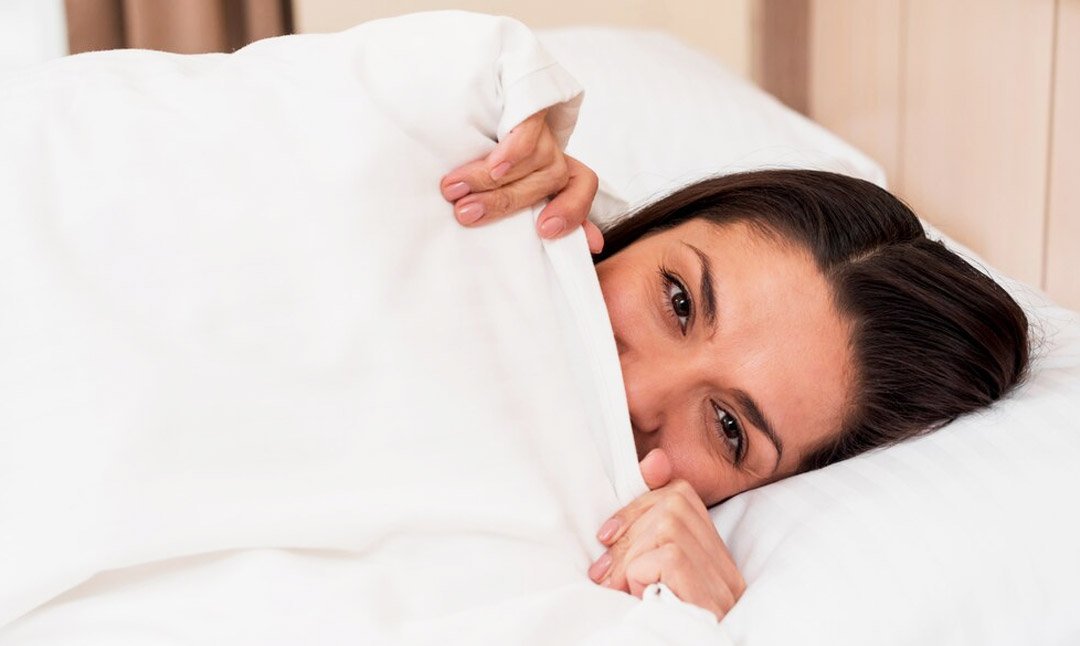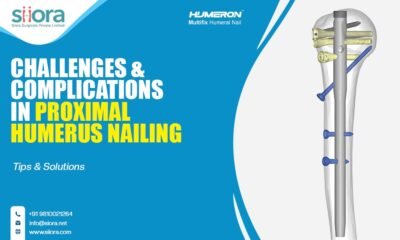Health
Sleep Apnoea: 10 Facts You Need to Know
Published
1 year agoon
By
Admin
Sleep apnoea is a common but serious sleep disorder that affects millions worldwide. It disrupts breathing during sleep, leading to various health issues.
In this article, we will cover essential facts about sleep apnoea, including its causes, symptoms, and treatments. Let’s find out and learn more!
1. What is Obstructive Sleep Apnoea?
Obstructive Sleep Apnea (OSA) is the most common type of sleep apnea. It occurs when the muscles in your throat relax too much while you sleep, temporarily blocking your airway.
This blockage can make you snore loudly or make choking or gasping sounds. It also disrupts your sleep, making you feel tired during the day.
2. Symptoms of Sleep Apnoea
Common symptoms of Obstructive Sleep Apnoea include:
- Loud snoring
- Episodes of stopped breathing during sleep
- Gasping or choking during sleep
- Morning headaches
- Excessive daytime sleepiness
- Difficulty concentrating
- Mood changes, such as irritability or depression
If you or someone you know experiences these symptoms, it may be time to seek an obstructive sleep apnea diagnosis.
3. Causes and Risk Factors
Several factors increase the risk of developing Obstructive Sleep Apnoea:
- Excess weight: Obesity significantly increases the risk.
- Neck circumference: A thicker neck can narrow the airway.
- A narrowed airway: Enlarged tonsils or adenoids can block the airway.
- Being male: Men are more likely to develop sleep apnoea.
- Age: The risk increases with age.
- Family history: A family history of sleep apnoea can increase your risk.
4. Sleep Apnoea in Children
Sleep apnoea in children is not uncommon and can lead to behavioral issues, poor academic performance, and growth problems. Symptoms in children include:
- Snoring
- Restless sleep
- Bedwetting
- Daytime sleepiness
- Mouth breathing
- Attention problems
Parents should know these signs and seek medical advice if they suspect sleep apnoea.
5. Diagnosis of Sleep Apnoea
An obstructive sleep apnea diagnosis usually involves a sleep study at home or in a sleep clinic. This study monitors breathing, oxygen levels, heart rate, and other vital signs during sleep. A detailed diagnosis helps in planning the appropriate treatment.
6. Non-Surgical Treatment Options
Non-surgical treatments for sleep apnoea include:
- Continuous Positive Airway Pressure (CPAP): A machine that delivers air pressure through a mask to keep the airway open.
- Oral appliances: Devices that reposition the jaw to keep the airway open.
- Lifestyle changes: Weight loss, exercise, and avoiding alcohol and smoking can reduce symptoms.
These treatments are often the first line of defense against sleep apnoea.
7. Surgical Treatment Options
When non-surgical treatments fail, surgery may be considered. Sleep apnea surgery can involve various procedures, such as:
- Uvulopalatopharyngoplasty (UPPP): Removes tissue from the throat to widen the airway.
- Genioglossus advancement: Moves the tongue muscle forward to prevent airway collapse.
- Maxillomandibular advancement: Repositions the jaw to enlarge the airway.
The cost of sleep apnea surgery in the UK varies depending on the procedure and the healthcare provider.
8. Impact on Health
Untreated Obstructive Sleep Apnoea can lead to serious health problems, including:
- High blood pressure
- Heart disease
- Stroke
- Diabetes
- Depression
It’s crucial to seek timely sleep apnea treatment to avoid these complications.
9. Importance of Treatment Adherence
Adhering to prescribed treatments, whether using a CPAP machine or wearing an oral appliance, is essential for effectively managing sleep apnoea. Inconsistent use can diminish the benefits and lead to ongoing health issues.
10. Living with Sleep Apnoea
Living with sleep apnoea requires ongoing management and lifestyle adjustments. Regular follow-ups with a healthcare provider, maintaining a healthy weight, and avoiding alcohol and smoking are vital steps. Support from family and friends also plays a significant role in successful management.
How to Manage Sleep Apnoea with Lifestyle Changes
Managing Obstructive Sleep Apnoea often needs a mix of medical treatments and lifestyle changes. Here are some key lifestyle adjustments that can greatly improve symptoms and overall health:
Weight Management
Being overweight is a major risk factor for Obstructive Sleep Apnoea. Extra fat around the upper airway can block breathing. Losing weight through a balanced diet and regular exercise can reduce or even eliminate sleep apnoea symptoms. Studies show that losing 10-15% of body weight can reduce sleep apnoea severity by 30-50%.
Healthy Diet
Eating a healthy diet with lots of fruits, vegetables, whole grains, and lean proteins helps with weight loss and overall health. Avoiding heavy meals, caffeine, and alcohol close to bedtime can also help improve sleep quality.
Regular Exercise
Regular physical activity strengthens the heart, reduces weight, and improves sleep quality. Even moderate exercise, like brisk walking or swimming, can have big benefits. Aim for at least 30 minutes of moderate exercise most days of the week.
Advances in Sleep Apnoea Diagnosis and Treatment
Technological advancements have significantly improved the diagnosis and treatment of Obstructive Sleep Apnoea. Here are some of the latest developments:
Home Sleep Apnoea Testing
Traditional sleep studies often require an overnight stay in a sleep clinic. However, home sleep apnoea testing is becoming increasingly popular. These tests are convenient, allowing patients to sleep in their own beds while wearing a portable monitoring device. The device records data on breathing patterns, oxygen levels, and heart rate, providing valuable information for an obstructive sleep apnea diagnosis.
Auto-Adjusting CPAP Machines
Continuous Positive Airway Pressure (CPAP) therapy remains the gold standard for sleep apnea treatment. Newer CPAP machines are more advanced, featuring auto-adjusting capabilities that adapt to the user’s breathing patterns in real-time. These machines provide optimal air pressure throughout the night, enhancing comfort and compliance.
Oral Appliance Therapy
For those who find CPAP therapy uncomfortable, oral appliance therapy offers an effective alternative. Custom-made oral devices reposition the jaw and tongue to keep the airway open. Advances in dental technology have made these devices more comfortable and effective.
Conclusion
Understanding sleep apnoea and its impact on health is crucial for managing this condition effectively. With appropriate diagnosis and treatment, individuals can improve their quality of life and reduce the risk of serious health complications. For more information on sleep apnoea and treatment options, visit them.
Taking proactive steps to manage sleep apnoea can significantly enhance overall well-being. Whether seeking an obstructive sleep apnea diagnosis or exploring sleep apnea treatment options, being informed and proactive is key to better health.

How Local Couriers Support Small Businesses

Best Replica YSL Bag in Patent Leather

Put Pen to Paper: How Custom Notebooks Can Make a Lasting Impression

From Listing to Sold: Sell A Car in Perth Without the Stress

Unlocking the Benefits of Engineered Steel Solutions for Modern Construction

Discover the Ultimate Comfort and Style of Women’s Underwear in Australia

Unlocking Performance: The Ultimate Guide to Custom PC Builds with Centre Com

Unlocking Opportunities in General Practice Recruitment: A Guide by Global Medics

Hope & Kent: How Snow Removal Technology Is Reaching B.C.’s Most Challenging Terrains

Connecting the Dots in Recruitment: How Skima AI Integrates Seamlessly with Your Hiring Stack

Carol Kirkwood’s Journey: Her Real Age, Husband, Career, and More

Revolutionizing Healthcare: The Emergence of AI-Driven Analytics

How Machine Learning and AI are Redefining the Future?

Aliza Barber: Meet Lance Barber’s Wife, Age, Life, Profile, Career and Net Worth

Evelyn Melendez: Jordan Knight’s Wife Bio, Marriage, Family, Career and Net Worth

Ilan Tobianah Biography: Family, Marriage, Lifestyle, Career and Net Worth

Who was Alice Marrow? Everything to Know About Ice-T’s and His Mother

King Von’s Autopsy Report: The Truth Behind the Tragic Death

Meet Otelia Cox: The Supportive Wife of Tony Cox – A True Fairy Tale Romance

Tea Leoni and Tim Daly Split – A Closer Look at Their Relationship and Breakup

How Local Couriers Support Small Businesses

Best Replica YSL Bag in Patent Leather

Put Pen to Paper: How Custom Notebooks Can Make a Lasting Impression

From Listing to Sold: Sell A Car in Perth Without the Stress

Unlocking the Benefits of Engineered Steel Solutions for Modern Construction

Discover the Ultimate Comfort and Style of Women’s Underwear in Australia

Unlocking Performance: The Ultimate Guide to Custom PC Builds with Centre Com

Unlocking Opportunities in General Practice Recruitment: A Guide by Global Medics

Hope & Kent: How Snow Removal Technology Is Reaching B.C.’s Most Challenging Terrains

Connecting the Dots in Recruitment: How Skima AI Integrates Seamlessly with Your Hiring Stack
Category
Trending
-

 News2 months ago
News2 months agoCarol Kirkwood’s Journey: Her Real Age, Husband, Career, and More
-

 Health2 years ago
Health2 years agoRevolutionizing Healthcare: The Emergence of AI-Driven Analytics
-

 Technology2 years ago
Technology2 years agoHow Machine Learning and AI are Redefining the Future?
-

 Celebrity1 year ago
Celebrity1 year agoAliza Barber: Meet Lance Barber’s Wife, Age, Life, Profile, Career and Net Worth






